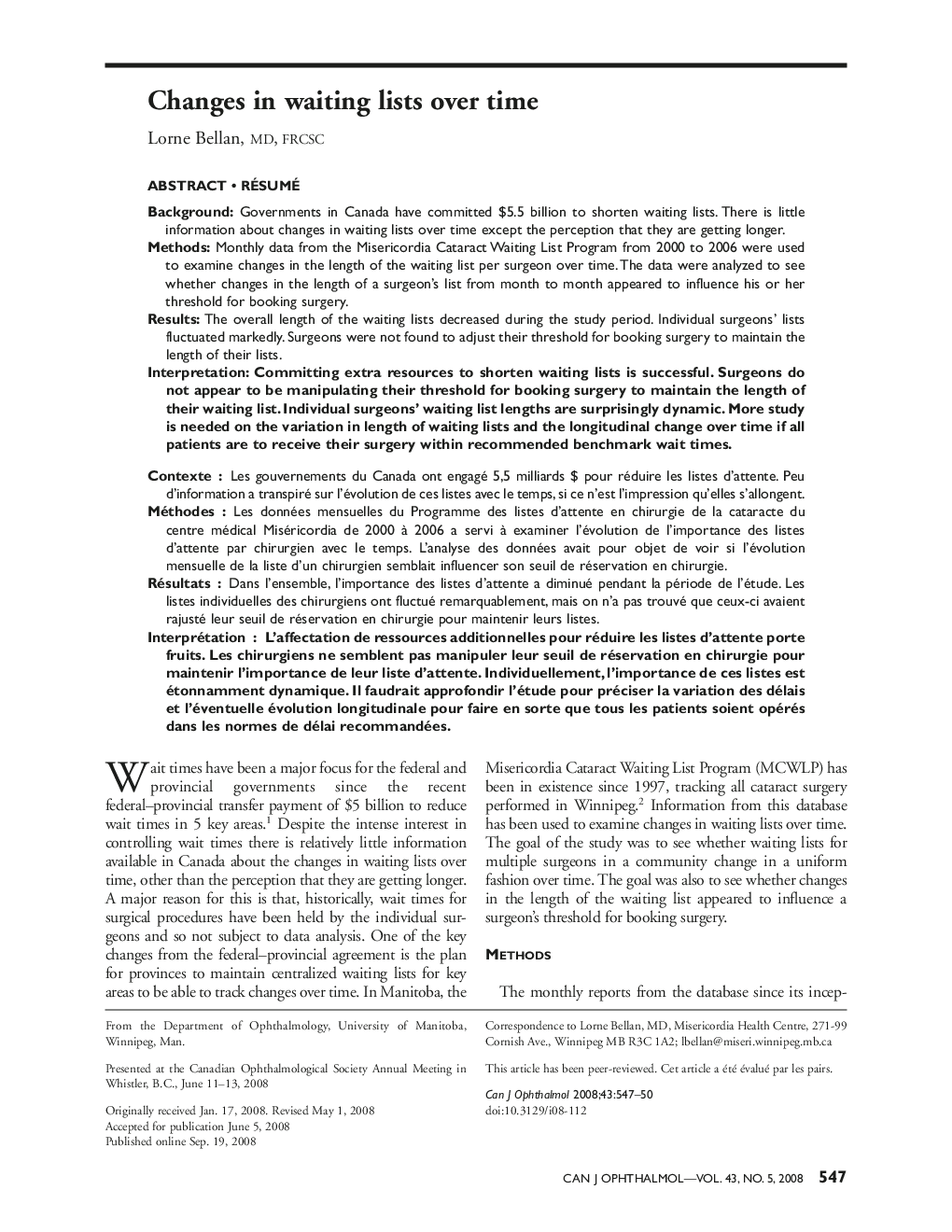| Article ID | Journal | Published Year | Pages | File Type |
|---|---|---|---|---|
| 4010021 | Canadian Journal of Ophthalmology / Journal Canadien d'Ophtalmologie | 2008 | 4 Pages |
Background: Governments in Canada have committed $5.5 billion to shorten waiting lists. There is little information about changes in waiting lists over time except the perception that they are getting longer.Methods: Monthly data from the Misericordia Cataract Waiting List Program from 2000 to 2006 were used to examine changes in the length of the waiting list per surgeon over time. The data were analyzed to see whether changes in the length of a surgeon's list from month to month appeared to influence his or her threshold for booking surgery.Results: The overall length of the waiting lists decreased during the study period. Individual surgeons’ lists fluctuated markedly. Surgeons were not found to adjust their threshold for booking surgery to maintain the length of their lists.Interpretation: Committing extra resources to shorten waiting lists is successful. Surgeons do not appear to be manipulating their threshold for booking surgery to maintain the length of their waiting list. Individual surgeons’ waiting list lengths are surprisingly dynamic. More study is needed on the variation in length of waiting lists and the longitudinal change over time if all patients are to receive their surgery within recommended benchmark wait times.
RésuméContexte: Les gouvernements du Canada ont engagé 5,5 milliards $ pour réduire les listes d’attente. Peu d’information a transpiré sur l’évolution de ces listes avec le temps, si ce n’est l’impression qu’elles s’allongent.Méthodes: Les données mensuelles du Programme des listes d’attente en chirurgie de la cataracte du centre médical Miséricordia de 2000 à 2006 a servi à examiner l’évolution de l’importance des listes d’attente par chirurgien avec le temps. L’analyse des données avait pour objet de voir si l’évolution mensuelle de la liste d’un chirurgien semblait influencer son seuil de réservation en chirurgie.Résultats: Dans l’ensemble, l’importance des listes d’attente a diminué pendant la période de l’étude. Les listes individuelles des chirurgiens ont fluctué remarquablement, mais on n’a pas trouvé que ceux-ci avaient rajusté leur seuil de réservation en chirurgie pour maintenir leurs listes.Interprétation: L’affectation de ressources additionnelles pour réduire les listes d’attente porte fruits. Les chirurgiens ne semblent pas manipuler leur seuil de réservation en chirurgie pour maintenir l’importance de leur liste d’attente. Individuellement, l’importance de ces listes est étonnamment dynamique. Il faudrait approfondir l’étude pour préciser la variation des délais et l’éventuelle évolution longitudinale pour faire en sorte que tous les patients soient opérés dans les normes de délai recommandées.
